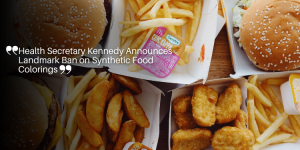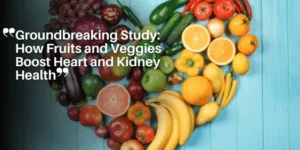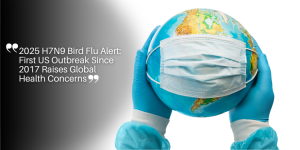Avoiding E. Coli in Fresh Greens: A Food Safety Expert’s Guide to Safer Salad Choices
Contamination Routes
- coli primarily spreads via contamination from animal or human feces. Tiny amounts of these contaminants can end up on fresh produce, posing health risks. This is particularly concerning in places like farms and processing facilities, where produce can come into contact with contaminated water or soil. Even with substantial agricultural improvements, such risks cannot be entirely eliminated.
Low Infection Risk but High Impact
One of the most alarming traits of E. coli is its low infectious dose.
Only a few bacterial cells are required to cause severe illness.
This makes it a particularly dangerous pathogen, even when present in minute amounts.
Understanding this helps underline the importance of rigorous food safety practices.
Uncooked Produce: A Prime Target
Fresh produce often finds its way to our tables uncooked, which means it skips any heat treatment that could kill bacteria.
Unlike meats, poultry, or even eggs, which undergo cooking, fresh fruits and vegetables are often consumed raw.
This makes them especially vulnerable to bacterial pathogens like E. coli.
Transition to Shopping Choices
Considering these risk factors, it’s critical to examine our shopping habits.
Making informed choices about the kinds of produce we buy can significantly influence our exposure to E. coli. Understanding which items are high-risk and adopting safer shopping practices can help us enjoy our greens without worry.
High-Risk Fresh Produce Items
When it comes to fresh produce, some items are higher risk than others in harboring E. coli. Let’s dive into why certain favorites like bagged salad greens, sprouts, and cantaloupe pose significant dangers.
Bagged Salad Greens
Ever noticed how convenient bagged salad greens are? Sadly, their convenience comes with a risk.
These sealed environments can trap bacteria, providing an ideal space for them to multiply.
Barbara Kowalcyk from the George Washington University Milken Institute School of Public Health mentions that she avoids bagged greens due to this very reason.
Damaged and torn leaves in the bag are particularly vulnerable, making it crucial to choose whole heads of lettuce and discard any outer or damaged leaves before consumption.
Sprouts
Sprouts, though nutritious, present another big risk.
The conditions they require to grow—warm temperatures and nutrient-rich water—are also perfect for bacteria like E. coli to flourish.
As a result, these tiny powerhouses are often in the spotlight during E. coli outbreaks.
Food safety experts recommend being extra cautious if you consume sprouts, perhaps even opting to skip them altogether.
Cantaloupe
Lastly, let’s discuss cantaloupe.
Its beautiful, webbed rind is not just visually interesting but a notorious hiding spot for bacteria, making it hard to clean thoroughly.
Don Schaffner, a professor of food science at Rutgers University, highlights how the webbing creates lots of nooks and crannies where bacteria can evade cleaning attempts.
Consequently, even diligent washing might not be enough to make cantaloupe safe to eat.
Understanding these risks helps you make informed choices.
Opt for whole produce over pre-cut or bagged alternatives and make sure you handle all fresh produce with utmost care.
Next, we’ll dive into some good practices for safer shopping choices.
Safer Shopping Choices
When it comes to minimizing your risk of E. coli from fresh produce, making the right choices at the grocery store is crucial.
Let’s break down some smart shopping strategies to keep your greens—and you—safe.
Whole Heads Over Pre-Bagged Greens
Bagged salad greens are tempting for their convenience, but they can be a dangerous choice.
Bags can create sealed environments where bacteria thrive, increasing the risk of E. coli contamination.
Experts like Barbara Kowalcyk advise opting for whole heads of lettuce instead.
These are not only fresher but give you more control in handling and cleaning Institute for Food Safety and Nutrition Security at the George Washington University Milken Institute School of Public Health.
Avoid Pre-Cut or Pre-Processed Produce
Pre-cut or pre-processed produce might save time, but they come with added risk.
Processing involves more handling, providing numerous opportunities for bacteria to be introduced.
Don Schaffner, a food science professor, notes that each step in processing is a chance for things to go wrong, leading to contamination Rutgers University.
Stick to whole, unprocessed items to avoid added risks.
Be Cautious with Highly Handled Items
Foods that require a lot of handling, such as pre-washed fruits, pre-cut vegetables, and even some mixed salads, should be approached with caution.
The more hands and surfaces an item comes into contact with, the greater the chance of contamination.
Experts recommend being particularly wary of items frequently linked to E. coli outbreaks like sprouts and bagged greens Northeastern University.
By following these tips, you can make safer choices when shopping for fresh produce.
Next, we’ll discuss how to handle these items properly once you bring them home.
Proper Produce Handling Techniques
When it comes to handling fresh produce, especially greens, implementing the right techniques can significantly reduce the risk of E. coli contamination.
Let’s delve into the practical steps you should take to keep your food safe.
Remove and Discard Outer Leaves
The outer leaves of leafy greens like lettuce often harbor more dirt and bacteria than the inner leaves.
It’s a good practice to remove and discard these outer leaves.
Additionally, any damaged or bruised portions should be cut away and disposed of, as they are more susceptible to bacterial invasion.
Wash Using Running Water and Friction
Washing your produce under running water is crucial. Don’t just give it a quick rinse; make sure to rub the leaves gently.
Using a clean paper towel or a vegetable brush can help create the necessary friction to remove bacteria.
This straightforward action can significantly reduce the bacterial load on your greens.
Thorough Drying After Washing
After washing, it’s important to dry your produce thoroughly.
Damp conditions can be conducive to bacterial growth, so using a clean cloth or paper towel to dry each leaf is a critical step.
You might also consider using a salad spinner to remove excess water more effectively.
Each of these steps ensures that your fresh produce is safer to consume.
Removing outer leaves, washing diligently under running water with friction, and drying properly all contribute to lowering the risk of E. coli contamination.
Even with these precautions, it’s essential to remember that vulnerable populations need extra care when it comes to food safety.
Keeping these techniques in mind will help you balance safety with maintaining a healthy, diverse diet.
Special Considerations
Extra Precautions for Vulnerable Populations
Certain groups, including young children, the elderly, pregnant women, and those with compromised immune systems, should be especially cautious when handling fresh produce.
The low infectious dose for E. coli means that even a small amount of bacteria can cause severe illness in these populations.
To minimize the risk:
- Always choose fresh, intact produce without any signs of damage.
- Strictly follow proper washing and drying techniques.
- Consider cooking produce, where appropriate, to kill any potential bacteria.
- Avoid high-risk items like bagged salad greens, sprouts, and unwashed cantaloupe.
Despite Agricultural Improvements, Vigilance is Key
While advancements in agricultural practices have reduced the likelihood of contamination, it is crucial for consumers to remain vigilant.
Pathogens can still be introduced during handling and processing.
Implementing a few simple precautions can dramatically reduce the risk of E. coli infection:
- Wash hands thoroughly before and after handling fresh produce.
- Use separate cutting boards for fruits/vegetables and raw meat to prevent cross-contamination.
- Keep fresh produce refrigerated to slow bacterial growth.
Balancing Food Safety with a Healthy Diet
It’s important to maintain a balanced diet rich in fresh fruits and vegetables despite the risks of foodborne illnesses like E. coli. Awareness and proper handling of fresh produce can offer both safety and nutrition.
Given the significant benefits of consuming a variety of fresh produce, the small adjustments necessary to mitigate risks are well worth it.
To ensure you continue enjoying healthy, fresh produce while avoiding E. coli, always prioritize cleanliness, proper washing, and mindful shopping choices. Your health and well-being depend on these consistent, informed practices.







